...english people have surnames because of people called william (kind of)You can tell a lot about family history from a surname. For instance, being a Smith, one of my ancestors would have been a metalworker. This is an example of a ‘trade’ surname and there are many out there; thatchers, fletchers, butchers, bakers and the like. But where did the practice of giving people surnames come from? Surnames came out of a need to differentiate between individuals with the same given name. You might think that therefore they have been around as long as people have. However, we can actually trace this phenomenon back to the late middle ages and the centuries following the Norman Conquest. In Anglo-Saxon England there was a great variation of personal names, and this variation meant it was not too hard to differentiate; there was most likely only one Athelstan or Wulfric in your village. After the Norman Conquest however, there was an increasing homogeneity to the names that people used. With the influx of Norman aristocracy some names such as Robert, Elizabeth, Mary and Thomas, became associated with a higher social standing, and seem to have been chosen by those who desired their children to be upwardly mobile. In the early 13th century in Lincolnshire, records show 15% of people called William. This trend towards similar names accelerated; when assessing the people in order to charge them the poll tax in 1379, the returns for Sheffield showed that 33% of people were called John and another 19% were named William. Yes, that’s right, over half of people carried one of these two names meaning you would meet a constant stream of Williams and require a means of distinguishing. Such a lack of variation was clearly the main causal factor in the need to add a second name for identification. Yet the concurrent growth in taxation bureaucracy and the requirement to know which William had paid his taxes and which had not, acted as an important catalyst. Steady population growth until the mid 14th century probably played a background role too. Initially, these extra names were descriptive of the individual and often changed during the course of your life. If you changed your job or where you lived, so your epithet could too. William Townsend (who lived on the edge of town) might become William Walton (his village of origin) if he were to move to a town for example. Over time these names stuck and by 1400 most people seem to have names that passed down through the generations as most still do today.
0 Comments
Dr Carrie Gibson's first book, 'Empire's Crossroad's', was an epic 'tour de force' on Caribbean history. In 2019, this was followed up with her new critically acclaimed book, 'El Norte. The Epic and Forgotten Story of Hispanic North America.' The glowing reviews speak for themselves! The New York Time Review is here. The Guardian Review is here. Dr Carrie Gibson joined the @VersusHistory Podcast on Episode #67 to discuss her new book. No doubt you would like the opportunity to win a free copy! If so, just listen to the question on the Podcast, set by Carrie herself, and enter using the form below. The winner will be selected at random Saturday 20 April 2019. Good luck! If you do not win, why not buy the book anyway?! The link is here. ...THAT THE ‘WILD WEST’ ONLY LASTED FOR 30 YEARS. “Thus the advance of the frontier has meant a steady movement away from the influence of Europe, a steady growth of independence on American lines.” ― Frederick Jackson Turner, The Frontier in American History In his 2001 book, The American West: The Invention of a Myth, David Murdoch asserts that America is ‘exceptional’ inasmuch as it is the only country to have chosen its own self-image: "No other nation has taken a time and place from its past and produced a construct of the imagination equal to America's creation of the West". The ‘selection’ of a particular place and time in history to use in the assembly of a symbolic self-image, if true, is a remarkable piece of history-making. The ‘Wild West’, or the ‘Old West’, is so dense with historical imagery and meaning that a single mention of either of these two terms immediately conjures in the mind, gunslingers, sheriffs, wagon trails, gold rushes, saloons, western expansion, the frontier, Davy Crockett, grit and American determination, among countless other imaginings. But did you know that this foundational imagery (imagined or otherwise) is rooted in a period of only thirty years after the American Civil War? That’s 1865 to 1895. Although westward expansion into the interior of the North American continent began in earnest with President Thomas Jefferson’s Louisiana Purchase in 1803 - for roughly $15 million in today’s money - the period of time upon which many Americans model their historical character came after the Civil War (1861-1865). More specifically, the ‘Wild West’ comes after Abraham Lincoln signed into law the Homestead Act of 1862. This act, along with subsequent laws, essentially opened up what amounted to roughly 10% of the total area of the contiguous United States to anyone who had not taken up arms against the Federal Government. For free. 160 million square acres west of the Mississippi River were given to 1.6 million homesteaders who promised to build on and improve the land they were given - which was usually around 160 acres. Certificate of the first homestead according to the Homestead Act. Given to Daniel Freeman in Beatrice, Nebraska 1963 (Source: http://www.archives.gov/education/lessons/homestead-act/images/homestead-certificate.jpg |Date= 1868) Regardless of the reasons for the giving away of free land (perhaps a discussion for another blog post), give it away the Federal Government did. And people rushed westward to stake their claim. Millions of them. It is during this period of dynamic western movement and land-claiming (‘land rushes’ were more frequent than ‘gold rushes’) that the imagery of the ‘Wild West’ - historically accurate or otherwise - is forged. From gunslingers like Billy ‘the Kid’ and Jesse James, to the ‘lawless’ frontier towns with saloons, gambling dens, brothels and noble sheriffs such as Wyatt Earp, as well as the ‘taming’ of the American land through hard work and bloody conflict (Wounded Knee was in 1890), the symbolism of the American West was very much created in this period. William H. Bonney A.K.A. Billy 'the Kid' Although westward expansion, as a concept, ended in 1912 with the admittance of Arizona to the US as a contiguous land mass, according to Frederick Jackson Turner, the ‘frontier life’ that had so completely shaped the character of America, was at an end long before then: "...the frontier has gone, and with its going has closed the first period of American history." Frederick Jackson Turner, The Significance of the Frontier in American History Turner wrote this in 1893. In those three brief decades after the Civil War, the mythology of the ‘Wild West’ - that which is embedded so deeply in American popular and historical culture - was born. Westward Expansion in a GIF. Source: Vivid Maps Elliott L. Watson
@thelibrarian6 What is History? To many it is the remembering and celebrating of important dates. To others, it might be the study of influential people in the past. However, History must be more than this. Historiography is the study of the methodologies and perspectives employed by Historians and it involves examining how and why historians have divergent perspectives on the same event or individual. In this sense, History can often be fluid and dynamic; the past is rarely fixed. For example, let’s look at Whitechapel, London in 1888. Jack the Ripper murdered five women and apparently left a series of letters taunting the London police and ridiculing their attempts to catch him. Simple enough, perhaps. However, historians have debated whether Jack actually murdered more than five women and whether the letters were actually from the killer. In Philip Sugden’s book, The Complete History of Jack the Ripper, he claims that many historians have actually invented detailed about the murders from incorrect research. Although he reaches a conclusion that the murderer was most likely to have been George Chapman, Sugden argues that an important reason for studying the Whitechapel murders involves more than identifying a serial killer. He argues that looking at living conditions in Whitechapel is of great value to Ripperologists. To Sugden, the socio-economic conditions and poverty of Whitechapel are of equal importance to, or at the very least heavily informing of, the study of the murders themselves. Sugden’s views were challenged in the early 1990s when a ‘startling’ discovery was made. Michael Barrett claimed to have found the diaries of Jack the Ripper, claiming that he had evidence to prove their validity and truth. Shirley Harrison’s book The Diary of Jack the Ripper claims to have been supported by scientists who date the diaries to the 1880s. Although Sugden challenged the diaries, it proves that 100 years after the Whitechapel murders, historical debate is still very much alive. Every historian has their own interpretation of the facts available, which is what makes studying History unique and exciting. Therefore, as interpretations of the murders continue to develop, the role of the historian becomes ever more crucial. Although the identity of Jack the Ripper is unlikely to be solved any time soon, the murders themselves and the historiography surrounding them are incredibly useful for highlighting the varying approaches to the collection and study of evidence. One recent publication of obvious note on the subject of the Whitechapel murders - and one which clearly demonstrates the need for renewed perspectives on history - is Hallie Rubenhold’s The Five, which examines the lives of the five female victims rather than attempting to solve the crimes. It is a remarkable book, and one that is vital in its refocusing of our historical lenses. Tim Love, Guest Contributor
@MrLove_History 5 historical premier league facts!The first Premier League season was in 1992-1993. Whilst this might seem like a long time ago, the highest tier of English football is actually quite young. By the time the Premier League was founded, the USSR had already dissolved and Margaret Thatcher had already resigned as the British Prime Minister. Whatever the relative youth of the top English division, how many of these 'Historical Pub Quiz Specials' do you know? Here they come - 5 Historical Premier League Football Facts. Oldest Player in the Premier League The oldest Premier League player was John Burridge, aged 43 years, 5 months and 11 days. The veteran Goalkeeper appeared for Manchester City on May 14, 1995, in a 2-3 home defeat to Queen’s Park Rangers. Having played his first league game back in 1969, that really is quite an achievement! Burridge didn't finish his playing career until 1997 when he served as player-manager at Blyth Spartans. What a career and what a piece of history. Youngest Player in the Premier League The youngest Premier League player was Matthew Briggs, aged 16 years, 2 months and 4 days old at the time. He appeared for Fulham in a 3-1 away defeat to Middlesborough back in May 2007. Briggs would go on to play for Millwall, Colchester United, Barnet and at the time of writing, was playing for Maldon and Tiptree in the Isthmian League North Division. Highest Transfer Fee received by a Premier League Club The highest transfer fee received by a Premier League club at the time of writing (March 2019) was for the services of attacking midfielder Philippe Coutinho in the 2017/2018 season, who left Liverpool for Barcelona in LaLiga. The fee was rumoured to be in the region of GBP105 million, with clauses that could see the fee rise to over GBP140 million. Most Own Goals by a Premier League Player This is probably the least wanted ‘football history pub quiz’ accolade of all for a football player. The most own goals scored by any Premier League player goals goes to Richard Dunne, with a total of 10. Dunne player for Everton, Manchester City, Aston Villa and Queen’s Park Rangers during his career, as well as making 8- starts for the Republic of Ireland. Second is retired England and Liverpool defender Jamie Carragher, with 7. Fewest Points in a Premier League Season This honour goes to Derby County from the East Midlands. Derby endured a torrid season in 2007-2008, accumulating just 11 points. Kenny Miller was Derby County’s top scorer with just 4 in the Premier League. Derby managed to accrue just one win, which came on 17 September 2007 against Newcastle. This was supplemented by 8 draws. One of these was also against Newcastle. We hope that you enjoyed those historical football facts. Patrick OShaughnessy (@historychappy) ...NEWCASTLE UNITED’S OFFICIAL PHOTOGRAPHER INVENTED THE CAR WINDSCREEN WIPER AND ORGANISED THE FUNERAL OF THE ‘RED BARON’.Gladstone Adams Gladstone Adams was born on the 16th May, 1880 in a terraced house on St Ann’s Row in Ouseburn, Newcastle Upon Tyne. The life that Adams would go on to lead might, if one was so inclined, make for an appraisal of the accomplishments of one’s own life. Such was the variety of industry and achievement of Gladstone Adams that any comparison would inevitably fall in favor of his life over one’s own. Consequently, this short blog post is written to highlight, rather than explore, a couple of interesting vignettes in the life of Newcastle’s Gladstone Adams. Photograph taken by Gladstone Adams in his capacity as Newcastle United's official photographer After an apprenticeship with professional photographer William Auty, Adams decided to open his own studio in Whitley Bay in 1904. He began to document local life with his camera - from the launch of RMS Mauretania into the River Tyne in 1907, to the lives of everyday Geordies. His talents led to him being appointed the official photographer of Newcastle United Football Club. In 1908 Adams drove down to London in his 1904 Darracq to cover Newcastle United’s FA Cup final against Wolverhampton Wanderers at Crystal Palace Park. Newcastle lost 3-1 that day and a dejected Gladstone Adams had to drive back home in his open-top Darracq car. To make matters more miserable, it began to snow. After several stops and attempts to clean his windscreen, he hit upon an idea: a contraption that would wipe the windscreen while driving. Thus, upon his return to Newcastle (albeit three years later) Adams filed a patent that detailed, what is recognisable as, a windscreen wiper. Unfortunately for Gladstone Adams, his version of the wiper was never manufactured - that distinction went to American inventor Mary Anderson. Nonetheless, the original prototype for his wiper is on display in Newcastle’s Discovery Museum. The prototype of Adam's windscreen wiper being held by John Clayson of the Discovery Museum in Newcastle Upon Tyne When the First World War erupted in Europe, Adams became a reconnaissance photographer for the Royal Flying Corps. On the 21st April, 1918 the 25 year old Manfred von Richthofen - the Red Baron - was shot down over Morlancourt Ridge near the Somme. One of the first on the scene was Gladstone Adams. Once identified as Richthofen, Adams was asked to photograph the body in order that these photographs be used as propaganda across Germany; the death of Germany’s greatest soldier would, it was hoped, shatter morale. Despite this, the Australian Imperial Force - from which the bullet that killed the Red Baron appeared to have been fired - gave the felled flying ace a celebrated funeral. Gladstone Adams helped to organise this funeral and can clearly be seen directing the pall bearers in footage from the time. The destroyed plane of Manfred von Richthofen - the Red Baron The body of the Red Baron was photographed by Gladstone Adams Although there is little written about Gladstone Adams, his life was rich and full of incredible achievements - only three of which are briefly touched upon here. Perhaps, as a Geordie of historical importance, it might be time to devote some greater energies in the direction of this man. Dr. Elliott L. Watson @thelibrarian6 ...Most of the time no one died in a gladiator fightIf you were to watch Hollywood you would be left with the impression that every gladiator fight ended in the death of the loser. We’ve all seen it. The triumphant gladiator looms over his vanquished foe and waits for the decision of the Emperor. Listening to the crowd, the Emperor pauses before dramatically putting his thumb down, at which the victor finishes off his opponent to the roar of the crowd. Without even going into the questionable thumbs down gesture, the overriding problem with this is that actually only a small proportion of gladiator fights ended in death. It is true that the fate of the defeated was left to the ambitious politician who put on the games, but, as with all entertainment today, it was also a business; gladiators were quite an investment. Gladiators were far from amateurs. Training a good quality fighter could take years of training, feeding and clothing them from their owners, not to mention the time and fights required to gain a reputation. Therefore, summarily executing them meant an instantaneous wiping out of this investment; as such the gladiator’s trainer would often receive compensation from the show’s sponsor were they to be killed. Naturally this is not to say that gladiator fights were not a dangerous business. Death could come either in the course of the fight or as a result of the patron's decision. However, Professor Mary Beard in her book Pompeii: the life of a Roman Town puts the chances of a bout resulting in a death, by either route, somewhere around 13%. Such a rate means that a gladiator's life expectancy was rather short, with the average age of those recorded with tombstones being in their late twenties. However, the fact remains, most of the time that Hollywood scene has it wrong. The vanquished gladiator was far more likely to be spared than skewered.
Conal Smith @prohistoricman ...many words we use in english originate from the arabic language.There are well over 300 million native Arabic speakers in the world and Arabic is an official language in over 20 countries. However, it may come as a surprise to learn that some of the words which we use in the English language today originate from the Arabic. A study of the etymology of many words with mathematical meanings and connotations will reveal that their root is in Arabic, even though they are now used in English. Here are ten words - they all begin with the letter 'A'. In some cases, they were adopted into English from intermediary languages, having already been borrowed from Arabic. So, let's take a look!
Did any come as a surprise? There are many, many more, such as Jumper, Giraffe and Candy, to name but a few. The history and evolution of languages is a complex, yet entirely fascinating one. Etymology really is something to get excited about! Patrick O'Shaughnessy (@historychappy) ...THAT CHAIRMAN MAO LIVED TO THE AGE OF 82 DESPITE A PROFOUNDLY UNHEALTHY LIFEstyle.125 years, 2 months and 13 days ago (at the time of writing) - on December 26th, 1893 - a baby boy was born in Shaoshan, Hunan. This child would, 56 years later, lead a successful communist revolution in China and serve as its unrivaled - and ruthless - leader until his death in 1976. He died at the age of 82 - something of a remarkable achievement in any country or period of history. Perhaps what is more remarkable is that, in so many respects, Mao Zedong led a life that many of us would consider dangerously unhealthy. Below is an abridged list of some of the ways in which he threw caution to the wind: He never brushed his teeth. In his 1988 memoir, The Private Life of Chairman Mao, Dr. Li, who functioned as Mao’s private physician, described how the leader’s teeth were dark green in colour and pungent in their odour. Mao followed a habit that was common among the Chinese peasantry of rinsing his mouth with tea in the morning, after which he would chew and swallow the leaves. When advice was offered that he might use a toothbrush, Chairman Mao replied that, since a tiger never brushes his teeth, then there was no reason for him to. He rarely, if ever, bathed. His refusal to brush his teeth was absolute, however, Mao’s general cleanliness, though unpalatable to most, was less so. Slightly. Other than when he occasionally went for a swim - which he famously did in the Yangtze River in 1966, marking his ‘return’ to political life after the disaster of the Great Leap Forward - he never bathed. Incidentally, when he swam in the Yangtze on that day in Wuhan, Mao set a world record swim time of 65 minutes for the 15 km distance he covered. For a 72 year old man who, to put it generously, was overweight and dangerously unfit, this ‘record’ (as it was reported by Chinese media at the time), was all the more impressive. A New York Times article entitled The Tyrant Mao, as Told by His Doctor, explained how Mao would never wash his face or hands and, other than the odd river swim, his only concession to cleanliness was an occasional ‘hot towel’ rub down from his bodyguards. Mao setting a 'world record' with his famous swim in the Yangzte in 1966 He ate. And ate. While millions of his people died of starvation during his rule, Mao never went hungry. In fact, at the Zhongnanhai Compound - the heavily guarded area within the Forbidden City - frequent parties would be thrown, the likes of which would, to quote Morrissey, “...make Caligula blush”. In addition to the sexual orgies engaged in by the Chairman, there were also orgies of a culinary kind. Mao’s favourite food - which he devoured with scant regard to portion control - was the rich hong shao rou. This dish consisted of cubes of sugar-caramelised pork belly coated with rice wine. He was a prolific spreader of STD’s Dr. Li diagnosed Mao as a carrier of trichomonas vaginalis and urged him to take an antibiotic to protect his sexual partners. Mao refused on the grounds that, since it wasn’t hurting him, it did not matter. Although it may be difficult to comprehend, the many women that he infected (and there were many) seemed to hold the disease up as a badge of honour, proving that they had been intimate with the Chairman. Wherever Mao travelled, he would have a never-ending coterie of young women brought to him to satisfy his sexual desires. It is claimed by Dr. Li that, as Mao got older the number of women required to satisfy these desires increased. As their number increased, their ages decreased. Significantly. Apparently Mao believed that the more sex he had, and the younger his partners, the longer the life he would lead. Perhaps his demanding sexual schedule is one of the reasons Mao would spend days on end dressed only in his dressing gown. Under Chairman Mao, the Chinese people were often forced to live a life of strict morality and adhere, often pathologically, to an ideological dogma that helped cause the death and suffering of millions. All the while their leader was indulging in private behaviour that would most likely have appeared, had it been made public during his lifetime, bourgeois and decadent at best; deviant, hypocritical and immoral at worst. Regardless, Mao’s scant regard to his own health and cleanliness, is staggering. Dr. Elliott L. Watson @thelibrarian6 ...How to avoid execution for any crime in the Middle AgesThe system of justice in the Middle Ages was rather complicated. If you committed a crime there were an array of ways in which justice could be dealt to you. If your crime was minor (a trespass as it was then known), such as not paying rent or petty theft, you would find yourself in a local manorial court run by the local lord. For more serious crimes such as murder, serious theft and burglary of goods over 12 pence(!) you were more likely to face the King’s justice, which could be rather severe; all of these crimes were capital offences if committed by any over the age of 10, and those found guilty would be hanged. There was one sure-fire way to avoid this fate however; alongside this manorial and royal systems of justice ran the Church courts. If you were a member of the clergy, you escaped the King’s justice and would be tried by your fellow churchmen. Here punishments tended to focus more on penance. Though standing in the village square in nothing but your smallclothes sounds far from pleasant, it certainly sounds preferable to hanging. Surely this was only open to real members of the clergy though?
Wrong. ANYONE could claim benefit of the clergy. The ‘proof’ if one can call it that was merely the ability to read a passage in latin. Still think that sounds tough as you had to learn latin? Wrong again. There was a set passage, which became known as the ‘neck verse’ that was used to test this. Hence, even if you could not speak latin, you could learn psalm 51 (below) by heart and then simply recount it when the bible was placed in front of you to test whether you were indeed clergy. Miserere mei, Deus, secundum magnam misericordiam tuam; et secundum multitudinem miserationum tuarum, dele iniquitatem meam. Amplius lava me ab iniquitate mea, et a peccato meo munda me. Quoniam iniquitatem meam ego cognosco, et peccatum meum contra me est semper. So there you have it, the simple route to avoid execution even if you commit murder in the Middle Ages. I hope you never need it. Conal Smith @prohistoricman |
Categories
All
Archives
April 2024
|


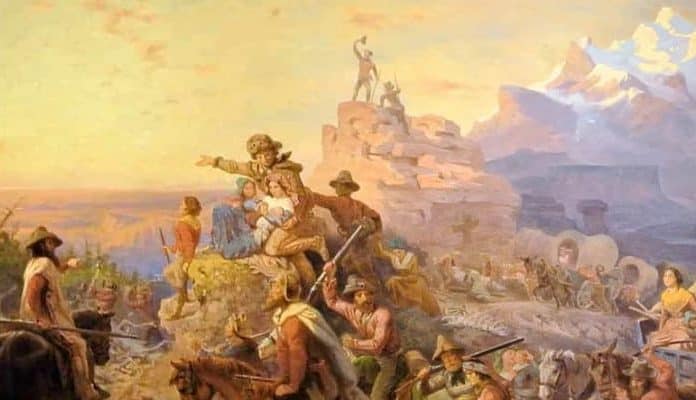



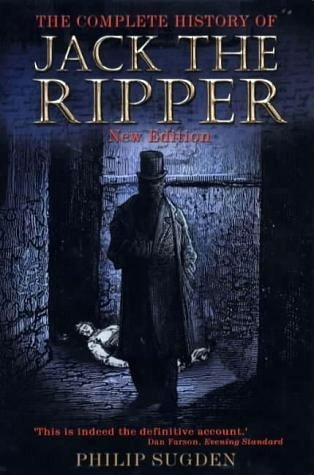








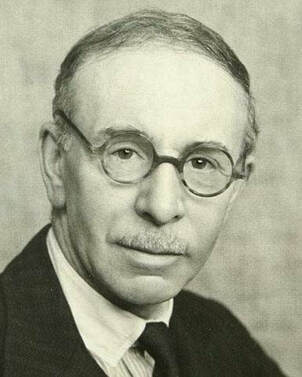
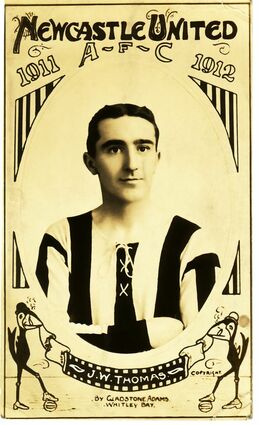



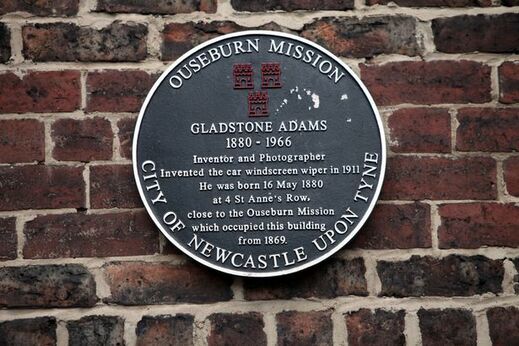



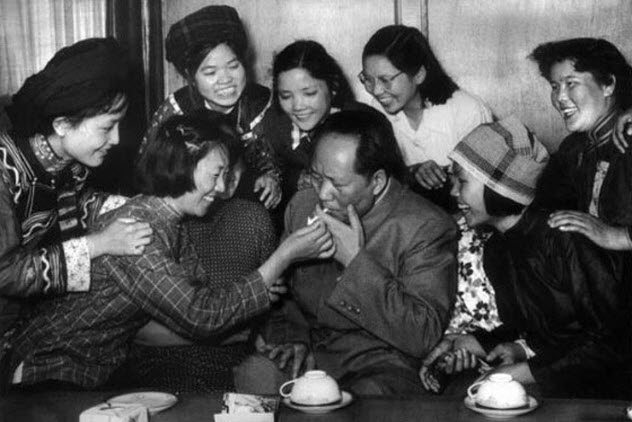
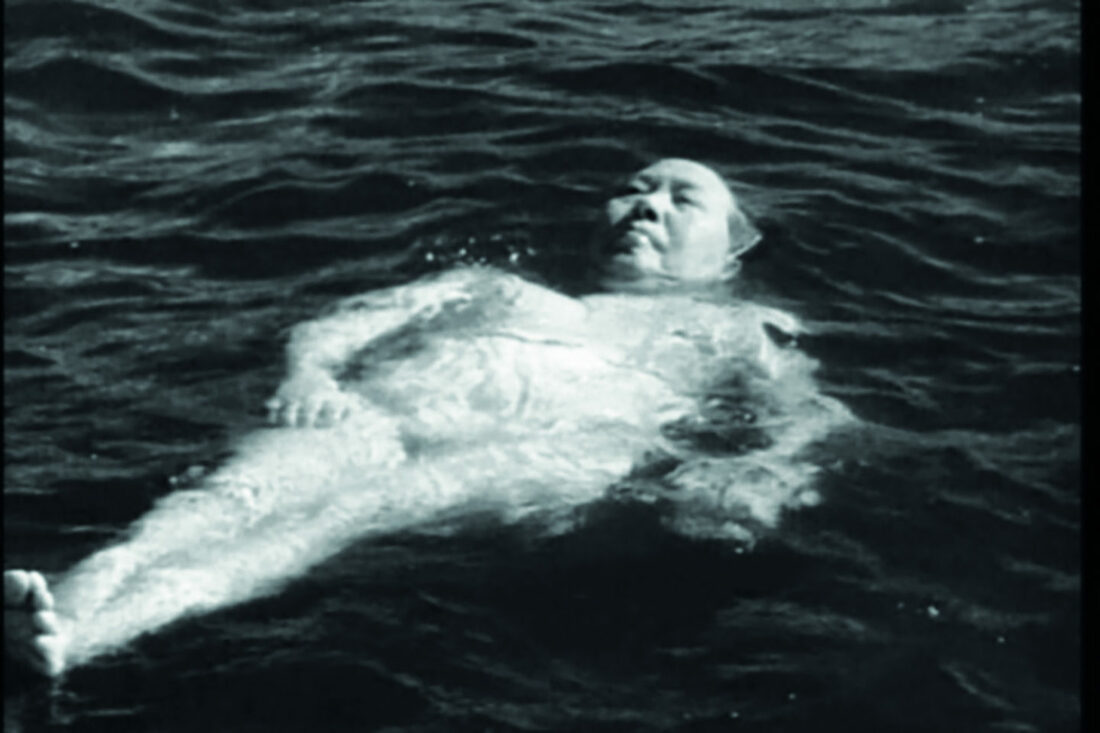

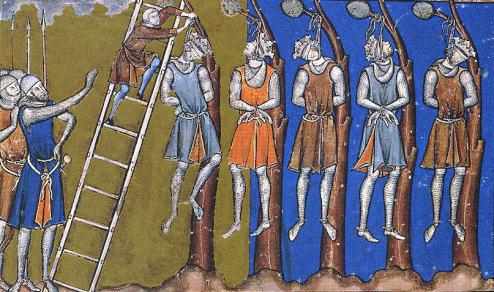
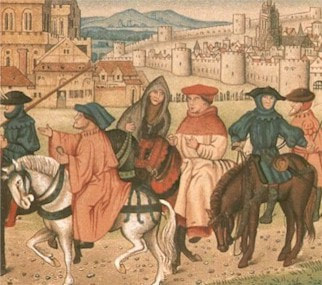
 RSS Feed
RSS Feed